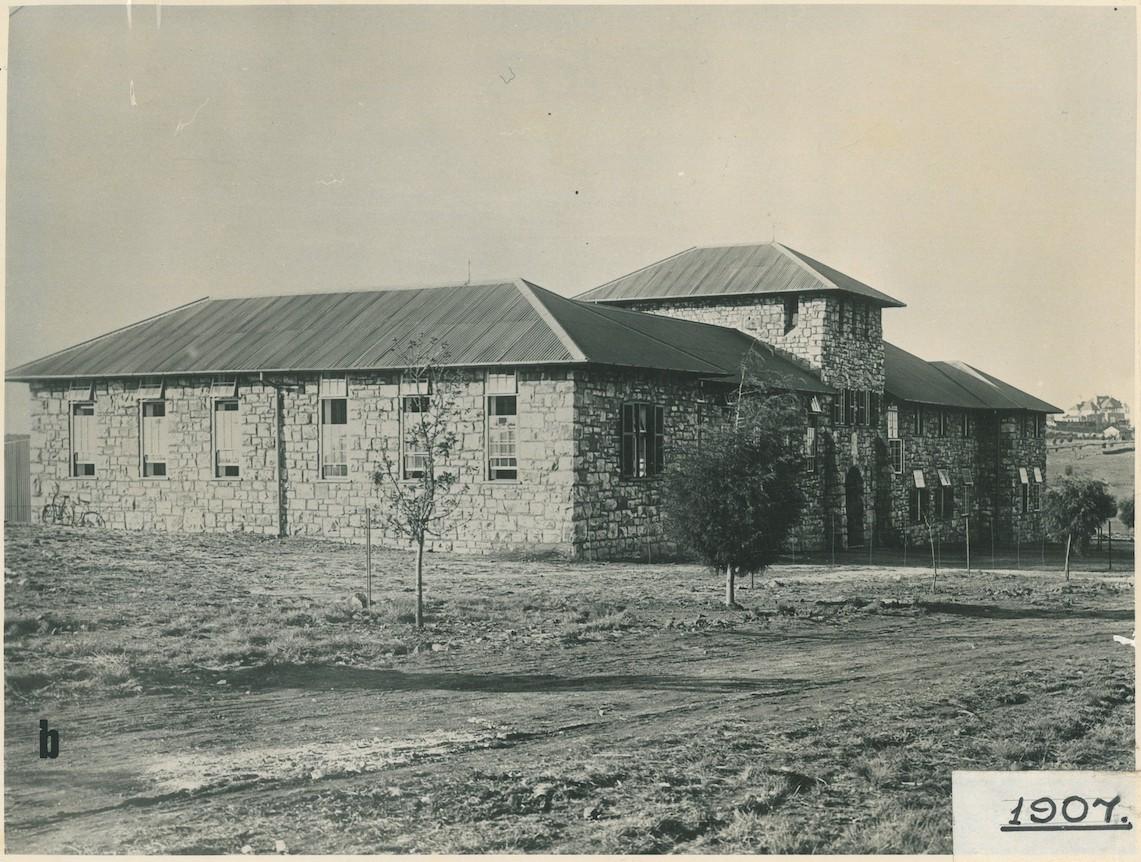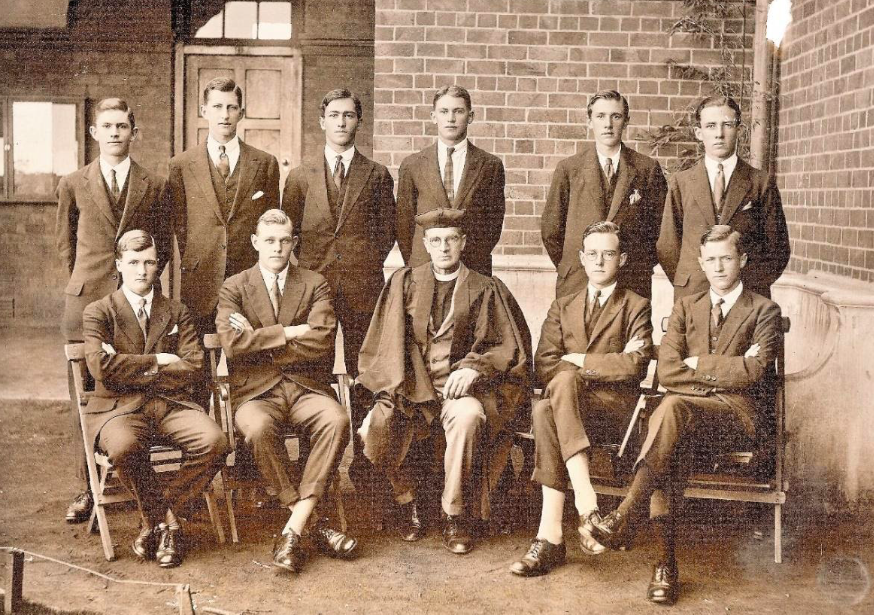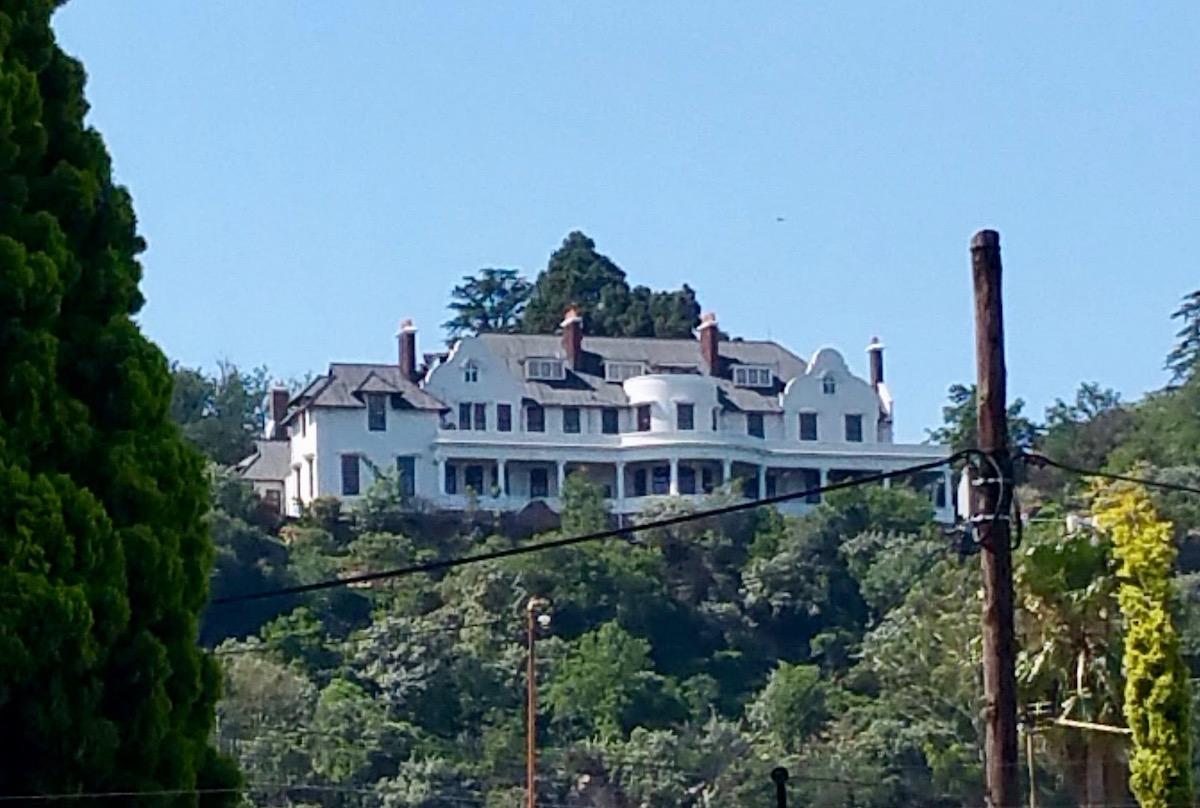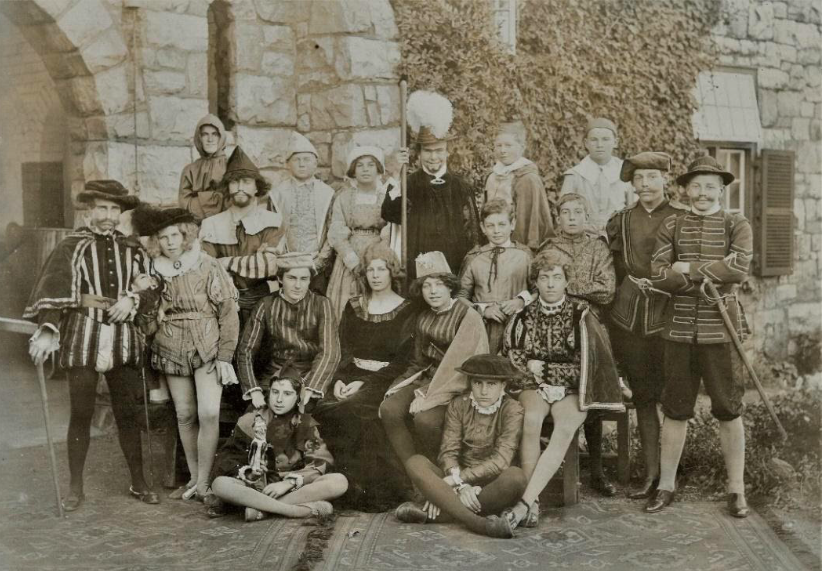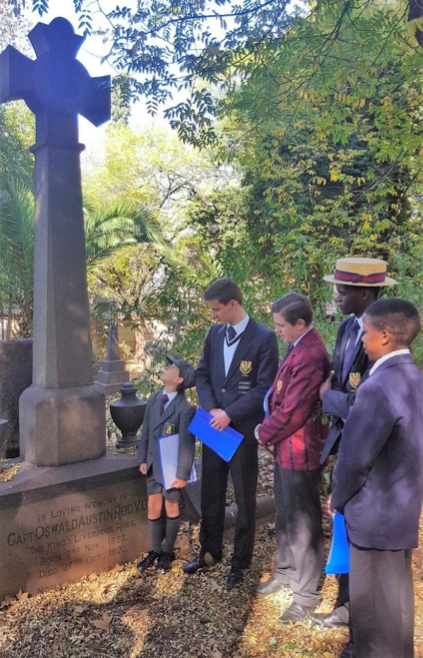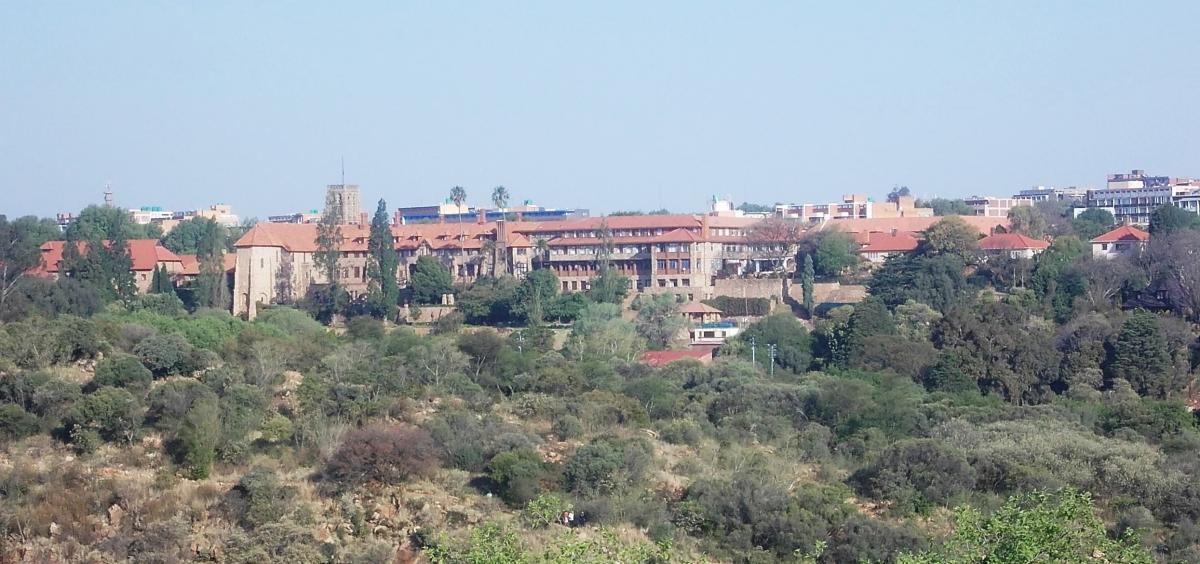
Disclaimer: Any views expressed by individuals and organisations are their own and do not in any way represent the views of The Heritage Portal. If you find any mistakes or historical inaccuracies, please contact the editor.
In 1920, St John’s College was still in its infancy. The school had been established in 1898 as a parish school of St Mary’s Anglican Church in downtown Johannesburg. Soon afterwards, the social upheaval caused by the Anglo-Boer South African War (1899-1902) – including the evacuation of many civilians from Johannesburg and the deportation of the school’s headmaster by the Boer authorities – had necessitated the closure of the school for some eighteen months.
After the War, enrolment figures had initially recovered quickly. However, the subsequent advent of the ‘Milner schools’ posed a mortal threat to private church schools such as St John’s. The ‘Milner schools’, heavily subsidised by the colonial government, offered better facilities and lower fees than St John’s. At the time, St John’s was located in the unassuming ‘Tin Temple’, constructed of wood and corrugated iron, in the vicinity of the present-day Noord Street taxi rank. The school had no playing fields.
Unable to compete with the better-resourced government schools in difficult economic times, St John’s College’s enrolment figures declined rapidly. By 1905, only forty-odd boys remained in the school, which was soon in substantial debt. The parish church, unable to sustain the school, handed it over to the Anglican diocese. Thus, St John’s became a diocesan school. But the general consensus was that the school was a ‘sinking ship’. Closure seemed imminent and inevitable.
As a measure of last resort, Archdeacon Michael Furse, who was the chairman of the College Council, requested the Community of the Resurrection to take charge of the school. The Community of the Resurrection is an Anglo-Catholic religious order based in Yorkshire. It had sent a few of its brethren to the Witwatersrand to do missionary work on the goldfields. The Community agreed to assume control of the school in an effort to keep it afloat. Accordingly, four of the Community’s men – James Okey Nash, Clement Thomson, Henry Alston and Eustace Hill, all Oxbridge graduates – took charge of the school at the beginning of 1906.
The new headmaster, Nash, soon conceived a grand plan for the future of St John’s College. He envisaged a school resembling the great public schools of England, of which he and his brethren were alumni. Such a school required a bucolic setting. Exploring the outskirts of Johannesburg on horseback, Nash soon found the ideal location on the Houghton Ridge. A donation of £5,000 by the diamond magnate Thomas Cullinan enabled him to acquire some of the land, and to engage the architects Herbert Baker and Frank Fleming to start designing the school’s buildings and grounds.
In August 1907, St John’s College moved to Houghton, where a modest beginning had been made with the construction of the school’s new buildings. Baker and Fleming had developed an ambitious blueprint for the school’s future development – but a perennial shortage of funds meant that many decades were to pass before that blueprint came to full fruition.
The original College building (now the Prep School), viewed from St David Road
By 1920, Fr Nash had become Bishop Coadjutor of Cape Town. Fr Thomson had succeeded him as headmaster. The school’s enrolment had grown to 425 boys, of whom 170 were in the Prep School and ninety were boarders. Early in the year, the Governor-General of the Union of South Africa, Viscount Buxton, visited St John’s. He had come to St John’s in 1914 to lay the foundation stone of the new Upper School buildings. He now returned to St John’s for a farewell visit, ahead of his retirement and departure from South Africa. He was taken on a tour of the grounds and was shown where new buildings were intended to rise up in years to come. ‘Yes, it’s all very nice,’ he said, ‘but you will agree that it leaves a good deal to the imagination.’
Perhaps his scepticism was not without justification: of the grand architectural vision conjured up by Nash, Baker and Fleming, only a relatively small part had materialised. There was the Prep School, the Gymnasium (now Big School), the old Science Block, the Crypt Chapel and half of the Upper School quadrangle, still conspicuously incomplete. Yet, all of this, and the Gladstone Bath, had been accomplished in a mere thirteen years, and despite the disruption caused by the intervening World War. This was no mean feat. However, in the economic slump that followed the War, there seemed to be little prospect of further progress towards the fulfilment of the grand vision in the foreseeable future. By the end of 1919, only £1,500 of the £7,000 required for the construction of the Memorial Chapel (intended to be a monument to the sixty Old Johannians who had perished in the War) had been raised; by October 1920, and despite vigorous fundraising efforts by a ‘band of lady workers’, the amount collected stood at only £3,250. Nevertheless, with the aid of the non-governmental Witwatersrand Council of Education, the College was able to acquire a further six acres of land, corresponding roughly to the present ‘C’ and ‘D’ fields and the land on which the Pre-Prep was to be built much later.
In these inauspicious circumstances, the 1st XI’s prosperous Lent Term season lifted spirits. After a drawn match against Pretoria Boys’ High School, St John’s played against Jeppe High School for Boys on 25 and 28 February 1920. St John’s scored 202 (Campbell 81). In reply, Jeppe were dismissed for 135 (Reid 5/16). In the second innings, St John’s scored 178/9 (Millar 53) and won on the first innings.
The match against King Edward VII School was played at St John’s on 10 and 13 March. St John’s won the toss, batted first and scored 173 (Campbell 55). By close of play, K. E. S. had reached 60/0, leaving them in a very strong position. On the second day, K. E. S. proceeded to 103 before the first wicket fell. Needing only 71 runs with nine wickets in hand, K. E. S. should have won comfortably but inexplicably collapsed to 167 all out (Nupen 81). For St John’s, Hartley took five wickets.
A prospectus issued in July 1920 provides a glimpse of life at St John’s College in those days. The curriculum was ‘on the lines of that pursued at the English Public Schools’, and focused on Christian Knowledge; English ‘in all its branches’; Latin; French or Dutch; Mathematics; Chemistry; and Physics. School hours were from 9 a.m. (but from 8.45 on Tuesdays and Fridays) until 12.45, and from 9 o’clock until noon on Saturdays for senior College boys. Lunch was provided at 1s. 6d. per meal for day-boys who came from a distance. Parents were exhorted not to allow ‘evening entertainments and engagements’ during term time. Cricket and association football (soccer) were compulsory games but boys were not allowed to play golf. (Fr Nash had imposed this prohibition because he believed that a sound batting technique was incompatible with the golf swing.) By law, all boys aged 12 to 17 had to belong to the cadet detachment. Boys were required to provide themselves with the school cap, badge, ribbon, tie and belt, as well as cricket and football shirts, knickers or trousers, gym shoes and ‘bathing things’. The school blazer was optional – a decidedly laissez-faire approach by modern standards but presumably it was accepted, especially in those challenging economic times, that the cost of a blazer was beyond the means of many parents. (Little did they know that the Great Depression was lurking around the historical corner.)
The prospectus described the College as standing:
‘on a site of nearly 30 acres, with three Playing Fields, in a fine position on the Houghton Estate, on the outskirts of the town. There is a large Gymnasium, a Museum, a Reading-room and a Library, a Miniature Rifle Range, two Lawn tennis Courts, and a fine Swimming Bath... The Yeoville, Observatory, Orange Grove, and Norwood Trams run close by (alight corner of Harrow Road [now Joe Slovo Drive] and Raleigh Street). In 1919 a large new Laboratory was opened containing a Lecture Room for fifty boys, a room for practical work in which twenty boys can work at the same time, and a Store-room.’
We also learn from the prospectus that the College staff had expanded significantly since 1906. There were five brethren of the Community of the Resurrection (Thomson, Alston, Hill, Symonds and Rudolf). The staff also included Messrs Frank Carey (Madras and Natal Government Certificates), HM Muller (Holland and Transvaal Government Certificates), the Revd WR Grundy, Stanley Dodson BA (London), Edward Simpkinson MA (Oxon), RWJ Rolfe BA (London) and J Rooke-Cowell MA (Cantab). In addition, there were Mrs Lauria (‘Certificated Drawing Mistress’), Mr F Meredith Clease (gymnastics instructor), and a growing music department comprising Mr P Lee-Ingles, a Fellow of the Royal College of Organists who was the organist at St Mary’s Church, Miss Bailey (piano) and Mr Connell FRCO (who was in charge of singing and the school orchestra). Miss Jean Stone was headmistress of the Prep School, assisted by Mademoiselles Thomas, Perrem, Millar, De la Hunt, Russell and Shelton, together with Miss Ablett (Drawing Mistress) and Miss Van’t Haff (Dutch Mistress). Dr Towert was the Medical Officer, while Mesdames Scorgie and Pretorius were the matrons.
At the College’s annual athletic sports, held on 8 September 1920, Lawrence Roberts made headline news by setting a national senior record of 5 feet 11⅛ inches in the high jump event. In due course, he was to win a Blue in athletics at Cambridge and represented South Africa in the Olympic Games in Paris in 1924.
The first edition of the College’s annual magazine, The Johannian, appeared at Michaelmas, 1920. Fr Cyprian Rudolf CR was the editor of The Johannian until the end of 1925. Whereas the erstwhile Headmaster’s Letter (until then the principal record of the res gestae of St John’s College) had been circulated free of charge, the annual subscription to The Johannian was 2s. 6d. Fr Cyprian is perhaps one of the unheralded heroes of the early years of the College. A product of Westminster School and Keble College, Oxford, he had commenced his novitiate with the Community of the Resurrection in 1914, and had been sent to St John’s in 1916. To him is due much credit for initiating the process of beautifying the College grounds by starting the gardens, planting trees and adorning the buildings with art works. In doing the landscaping of the grounds, he worked closely with Frank Fleming. He also started the College museum. During a particularly hot and dry summer in the 1920s, a young staff member approached Fr Cyprian, who was standing with a watering can at the young oak trees he had planted to the north of the Prep courtyard. ‘Father,’ he asked, ‘why don’t you plant something fast-growing, such as wattles and blue-gums which will give us shade and shelter in a very short time?’ To which Fr Cyprian replied: ‘Young man, I am not planting for myself.’
Fr Eustace St Clair Hill C. R. and the College prefects, 1920
The College 1st XI did not enjoy a successful Advent Term season. The team lost to Jeppe by more than a hundred runs. The match against K. E. S. (an unbeaten side) was played on 17 and 20 November. St John’s scored 88 in the first innings, ‘Buster’ Nupen taking 5/44 for K. E. S. In their innings, K. E. S. scored 347 (Nupen 112). In the second innings, St John’s scored 122 (Nupen 5/15), losing by an innings and 137 runs. St John’s drew with Mr Elliott’s XI, beat Mr Walshe’s XI, and also beat Pretoria B. H. S. (for the first time in a match played in Pretoria). Three matches were played against Transvaal University College, one of which was won by St John’s by 98 runs, the other two being lost by considerable margins. The annual Past v Present match was played on 16 December 1920, and was won by the Old Johannians by 62 runs.
The Prep 1st XI played a memorable match against Park Town School. (P. T. S. was a preparatory school originally situated in Parktown). In 1917, P. T. S. had relocated to Beauvais, a mansion in Grace Road, Mountainview – the palatial white building one sees on the hillside as one travels southward along Louis Botha Avenue). St John’s won, ‘but not by good fielding,’ it was reported in The Johannian. ‘The latter was very slow, and at least one catch was missed by slips – of all persons! – being fast asleep. I suppose some would be inclined to say, “Well, we won, and that’s all that matters.” But winning is not all that matters, and a team should do its best against any side, however weak, and not fall half asleep until a hit happens to be made, then waking up and coming to the conclusion that perhaps it would be better if someone were to trot after the ball!’
Beauvais (The Heritage Portal)
In the match against Marist Brothers’ College, the St John’s Prep opening batsmen got ‘stage fright’ and three wickets fell for three runs. The total score was 50, and the batting generally poor. ‘Still, 50 was not so very bad, and there was a reasonable chance of winning, spoilt completely by the most shocking exhibition of fielding that could possibly be imagined. At least 20 catches were dropped – adding, of course, 20 men to the Marist Brothers’ team – and many fielders stood waiting for a ground hit like croquet hoops, letting it trickle slowly between their legs.’ The Prep 2nd XI defeated P. T. S. by 60 runs. ‘The most notable thing in the game was the condition of the score book. It is doubtful which end of the pencil the scorer used.’
On 27 October 1920, Oswald Austin Reid – at that stage perhaps the most famous Old Johannian – passed away. Born on 2 November 1893, he was the son of the architect Harry Austin Reid, who had designed the Cape Town City Hall. Having previously attended Diocesan College Preparatory School in Cape Town, Oswald captained the St John’s College cricket and football teams, and was Head of School, in 1909. He took the part of Henry V in the 1908 Shakespeare play and rendered it ‘with tremendous fire’. In 1910, Reid went to Radley College, near Oxford. In 1911, he won Radley’s heavyweight boxing title. In 1912 he was Senior Prefect and captain of cricket, football, racquets and fives. In 1913 he was captain of rugby and swimming, and president of the debating society. On 6 and 7 August 1913, he played for the English Public Schools XI against M.C.C. at Lord’s.
The College Shakespeare production, 1920
On 14 August 1914, Reid joined the 4th Battalion King’s Liverpool Regiment and was commissioned as a 2nd Lieutenant, eventually gaining the rank of Major. He first saw action at the Battle of Neuve Chapelle, which he described in a letter dated 26 March 1915 to Fr Nash as ‘a most severe baptism of fire’ during which his two best friends had been ‘bowled over’.
He subsequently served in Mesopotamia, attached to the 6th Battalion, Loyal North Lancashire Regiment. On 8 March 1917, finding himself and a small party of men stranded at the Dialah River after the sinking of a pontoon bridge, he consolidated a small post with the advance troops on the opposite side of the river to the main body, after his lines of communication had been cut by the sinking of the pontoons. He maintained this position for thirty hours against constant Turkish attacks by bombs, machine-guns and rifle fire, with the full knowledge that repeated attempts at relief had failed and that his ammunition was all but exhausted. It was greatly due to his tenacity that the crossing of the river was effected the next night. This conduct earned Reid the Victoria Cross (‘for most conspicuous bravery in the face of desperate circumstances’ and for ‘dauntless courage and gallant leadership’), as well as the King of Italy’s Silver Medal for Valour. The V. C. was presented to him by King George V at Buckingham Palace.
Oswald Reid returned to Johannesburg in 1920. His health had been damaged irreparably by his military experiences, and he passed away on 27 October 1920, six days before his twenty-seventh birthday. St Mary’s Church was crowded for the funeral service, at which some of his old schoolmasters officiated. Crowds lined the streets along which the procession, including a cadet detachment from St John’s College, pacing ‘with measured military thread’, passed from St Mary’s to Braamfontein cemetery. The simplest and most striking of the many wreaths was that laid upon the coffin by the Senior Prefect of St John’s College. It consisted of oak leaves tied with the school colours, and it was made by the boys themselves from the trees of the College estate.
St John’s boys at Oswald Reid’s grave in Braamfontein cemetery on 4 June 2017
About the author: Dr Daniel Pretorius is the chairman of St John’s College’s heritage committee.
This is a revised version of a note that was originally published on the website of St John’s College
Comments will load below. If for any reason none appear click here for some troubleshooting tips. If you would like to post a comment and need instructions click here.

